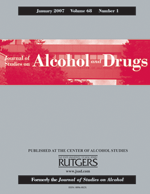
The rate of student alcohol abuse has remained unchanged for 30 years: Nearly 40 percent of 2010 U.S. college students still engage in high-risk alcohol consumption. That means, unfortunately, that binge drinking is as widespread among today’s freshmen as it was for their parents’ generation and potentially just as lethal. Each year, almost 2,000 U.S. college students die from alcohol-related causes. An estimated 600,000 others are injured while under the influence.
Loss of life is reason enough to act, but excessive drinking, as repeated studies have shown, can also lead to academic problems, unsafe sex and sexual abuse. New research confirms that alcohol can damage brain development among college-age men and women, impairing functions associated with focus, decision-making and impulse control. As a leader, a parent and a physician, I believe that this particular “given” of college life has led to far more deaths and harm than we should tolerate. > > > > Read More




























